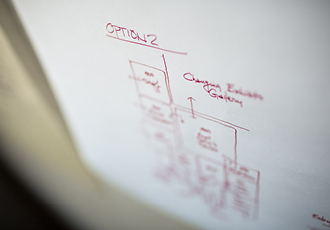 Interpretation provides the interface between visitors and an institution’s core assets, from artifact collections to live animal exhibits. It serves as a kind of filter helping to shape the guest experience, informing, engaging, and organizing their visit. Establishing a clear direction for interpretation is an essential tool for long-term planning.
Interpretation provides the interface between visitors and an institution’s core assets, from artifact collections to live animal exhibits. It serves as a kind of filter helping to shape the guest experience, informing, engaging, and organizing their visit. Establishing a clear direction for interpretation is an essential tool for long-term planning.
An important segment of Main Street Design’s practice is comprised of interpretive planning efforts. These can be as narrowly focused as a single exhibition or as broad as an entire geographic region. They may be pursued as stand-alone exercises or in conjunction with larger strategic or facility master plans. In every case the goal is the same: to give institutions a flexible framework for making effective decisions about how best to deploy scarce resources.
Considering interpretation as part of the master planning process creates opportunities for synergy between design and operations. Institutional sustainability ultimately depends on properly aligning public experience offerings with organizational resources and market demands and expectations. Working together, interpretive planners, financial and strategic planners, and architects and facility planners can create integrated and holistic plans. In addition, having an overall interpretive vision in place before starting design can often produce meaningful construction cost savings.
